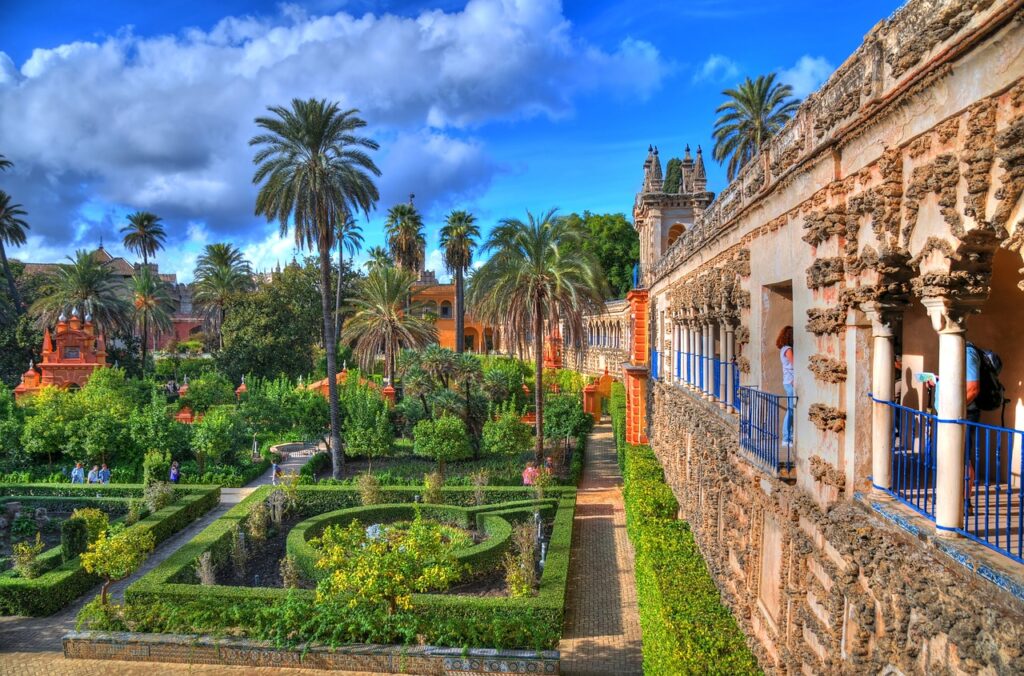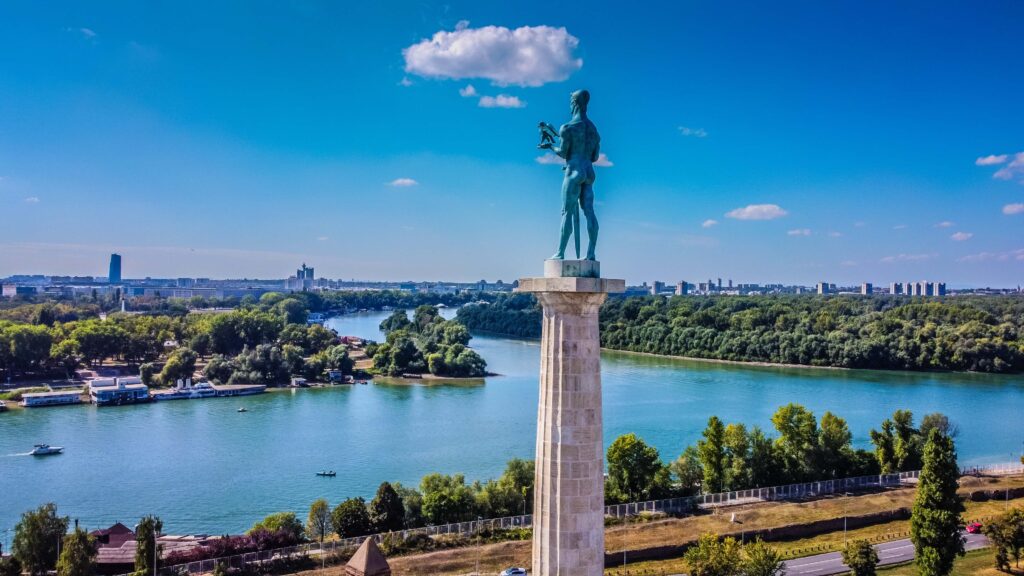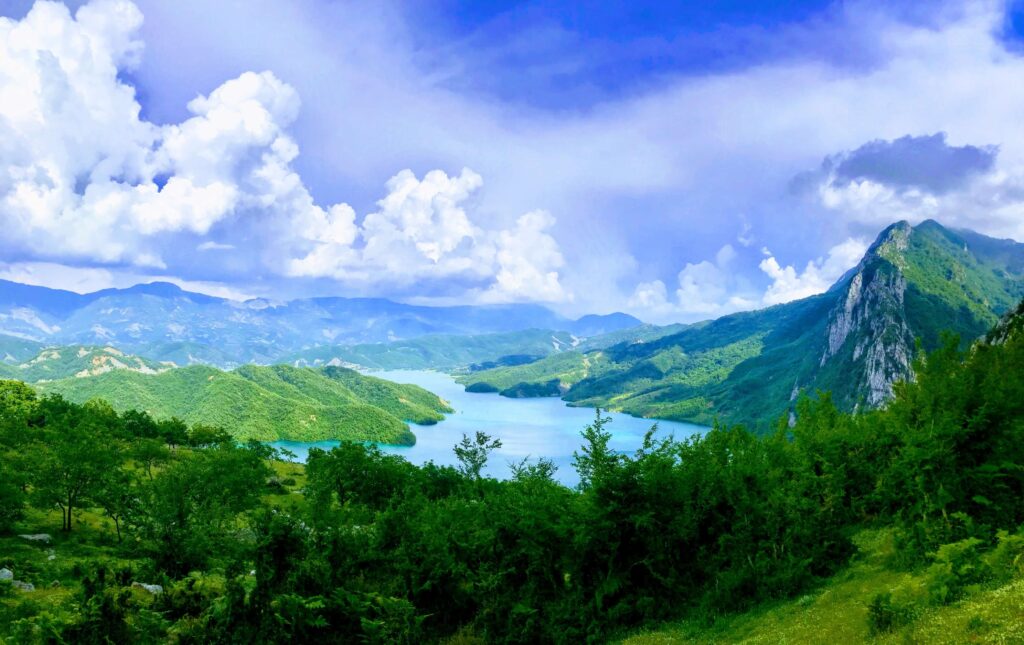Seville’s landmarks, whether explored in a day or over the course of a longer stay, provide the opportunity to dive into the city’s remarkable history and culture. The top five must-see attractions we’ve chosen provide an excellent overview of the Andalusian capital. What’s more, they’re all located within walking distance of each other.
Whether you’re drawn to the majestic Setas de Sevilla (the Metropol Parasol for the uninitiated) or the timeless allure of the historic centre, you’re in for an experience that beautifully melds the past with the present.
*This post contains affiliate links, which are included to provide easy access to products or services we genuinely recommend. We may make a small commission if you make a purchase or booking through one of these links. This comes at no extra cost to you, but helps to sustain our site and create more valuable content.*
Metropol Parasol
The Metropol Parasol, affectionately known as ‘Las Setas de Sevilla’ (The Mushrooms of Seville), stands as a modern icon amidst Seville’s historic landscape. It’s also the most modern of Seville’s landmarks.
Designed by the Berlin-based architect Jürgen Mayer, this unique structure claims the title of the world’s largest wooden building. Its dimensions are impressive, stretching 150 x 70 metres and soaring up to 29 metres in height.
Key Features:
- Structure and Design: Comprising six parasols mimicking giant mushrooms, it offers both shade and an architectural spectacle. The design is inspired by local historical and natural elements, such as the Seville Cathedral’s vaults and the nearby fig trees.
- Levels: The Metropol Parasol features five levels, including a panoramic viewpoint, tapas area, event space, shaded Plaza Mayor, and a market with shops and cafes.
- Antiquarium Museum: Beneath the square lies the Antiquarium, showcasing archaeological finds from the site.
Practical Information:
- Opening Times: Open daily from 9:30 am to 11:30 pm.
- Admission: General entry is €15, with free access for children under 5, Seville residents, and disabled persons along with their companions.
- Accessibility: Located in Plaza de la Encarnación, the structure is a short walk from the nearest metro station. It’s also accessible by bus.
Seville Cathedral and La Giralda
The Seville Cathedral is officially known in Spanish as the Catedral de Santa María de la Sede. As well as being the largest Gothic cathedral in the world, it’s also a UNESCO World Heritage site.
Construction began in the early 15th century on the site of a former mosque, showcasing a blend of Christian and Islamic architectural elements. The cathedral is renowned for its impressive size, intricate stone work, and the Giralda tower, offering panoramic views of Seville.
Key Highlights:
- Giralda Tower: Originally a minaret, the Giralda tower is a testament to the cathedral’s Moorish roots. It’s accessible to visitors, and offers breathtaking views.
- Main Altar: The cathedral’s main altar is a masterpiece of Gothic woodcarving, depicting scenes from the life of Christ.
- Christopher Columbus’ Tomb: A monument inside the cathedral claims to hold the remains of the explorer Christopher Columbus.
The cathedral welcomes visitors almost every day, with specific hours for tourists and times reserved for worship. It’s recommended to check the official website or contact the cathedral directly for the most up-to-date visiting hours and ticket information. Guided tours are extremely popular in peak season (June-August) so make sure to book in advance.

Real Alcázar
Nestled in the heart of Seville, the Real Alcázar stands as a magnificent testament to the city’s rich history and cultural heritage. Recognised as a UNESCO World Heritage site, this palatial complex has served as a centre of power in Andalusia for centuries, with its walls echoing tales of the past.
Its architectural beauty is a harmonious blend of Christian and Moorish influences, showcasing elements of Gothic, Renaissance, and Romanesque design. The Alcázar’s Mudéjar art, a unique fusion of Romanesque and Islamic architecture, is particularly noteworthy.
Key Highlights:
- Architecture: The Alcázar’s design features a marriage of Christian and Moorish architecture, with Mudéjar art as a standout element.
- Gardens: Covering 75% of the palace complex, the Alcázar Gardens boast over 20,000 plants from more than 187 species, offering a serene escape within the city.
- Royal Apartments: For those interested in the royal lifestyle, the Royal Apartments provide a glimpse into the private quarters of the Spanish royal family, though an additional ticket is required for access.
Practical Information:
- Admission: General admission tickets are priced from €13.50, with the Alcázar open daily from 9:30am to 5pm. Prices vary depending on extras like audio guides and guided tours, as well as discounts for children, students and seniors.
- Best Time to Visit: To avoid the crowds and the heat, consider visiting early in the morning or late in the afternoon.
- Location and Access: Conveniently located in central Seville, the Alcázar is easily accessible by metro, tram, bus, or car.
Torre del Oro
The Torre del Oro, a dodecagonal military watchtower, is an emblem of Seville’s rich maritime history and cultural heritage. Constructed in the 12th century by the Almohads, it originally functioned alongside a heavy chain that stretched across the Guadalquivir River to prevent enemy ships from navigating its waters.
Today, it houses the Museo Naval de Sevilla. Visitors can explore a fascinating collection of antique shipping instruments, scale models, and sea maps, highlighting Seville’s naval significance.
Practical Information:
- Entrance Fees: €3 for adults, €1.50 for students, children (6-14 years), and seniors (65+), free for children under 6.
- Opening Hours: Monday to Friday 09:30-17:30, Saturday and Sunday 10:30-18:30, closed on public holidays.
The tower’s golden hue, attributed to the golden tiles that once adorned its exterior, coupled with its historical resilience against numerous attacks and sieges, encapsulates Seville’s enduring spirit. The Torre del Oro’s strategic importance, both as a defensive structure and as a beacon of Seville’s maritime legacy, makes it a must-visit landmark for those keen on delving into the city’s past.

Plaza de España and the Maria Luisa Park
Nestled in the heart of Seville is the Plaza de España and the adjoining Maria Luisa Park. Together, they form a captivating duo of historical and cultural significance.
Built in 1928 for the Ibero-American Exposition, the Plaza de España is a marvel of architectural beauty. Designed by Seville’s renowned architect Aníbal González, it features a semi-circular building with a grand fountain at its centre, and a canal lined by four bridges.
The design, a revival of Mudéjar architecture, reflects a period when Western Europe was enthralled by Oriental aesthetics. Notably, the plaza served as a filming location for ‘Star Wars: Attack of the Clones,’ adding a layer of pop culture allure.
The plaza is conveniently located next to the Maria Luisa Park, which was once the private gardens of the San Telmo Palace. Donated in 1893, this sprawling green space offers a serene escape with its shady paths, Mediterranean trees, and vibrant flowers. Key attractions within the park include:
- Plaza de América: Home to the Archaeological Museum and the Museum of Popular Arts and Traditions.
- Statues and Fountains: Celebrating Spanish literary figures and featuring ornate water features like the lion fountain.
The park and plaza are open to the public daily, with free entry. Both offer a perfect setting for leisurely walks, picnics, or simply soaking in the rich cultural tapestry of Seville. The nearest metro station, Prado de San Sebastian, provides convenient access to this must-see landmark.
Final thoughts and useful information on Seville’s landmarks
From the awe-inspiring grandeur of the Seville Cathedral and La Giralda to the architectural marvel of Metropol Parasol, each of Seville’s landmarks offers a glimpse into the rich tapestry of Seville’s past and present.
You can find tours and sightseeing packages, as well as skip the line admission tickets, on sites such as Get Your Guide, Viator and Tiqets. Make sure to compare prices so that you get the best deal.
Ultimately, Seville’s allure transcends the mere aesthetic or historic appeal. It resides in the city’s ability to preserve its heritage while simultaneously embracing modernity, a testament to its enduring vibrancy and appeal. When visiting Seville’s landmarks, you’ll see that they stand not just as monuments of the past but as beacons for future generations, illuminating paths of cultural appreciation and understanding in the heart of Andalusia.
CTA: If we haven’t convinced you to book a trip based purely on exploring Seville’s landmarks, check out our articles Top Reasons to Visit Seville, Spain and How to Make the Most of One Day in Seville.



